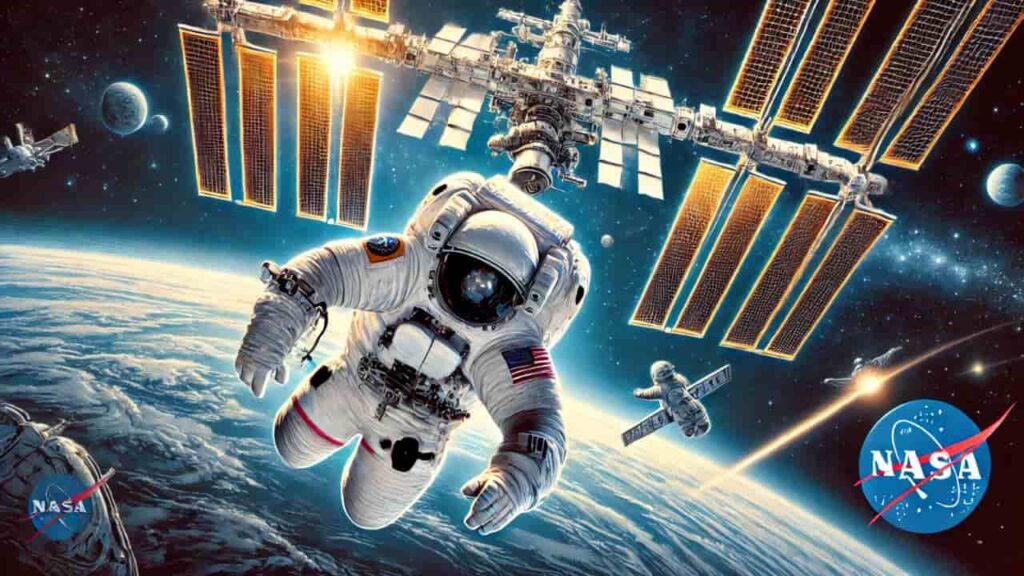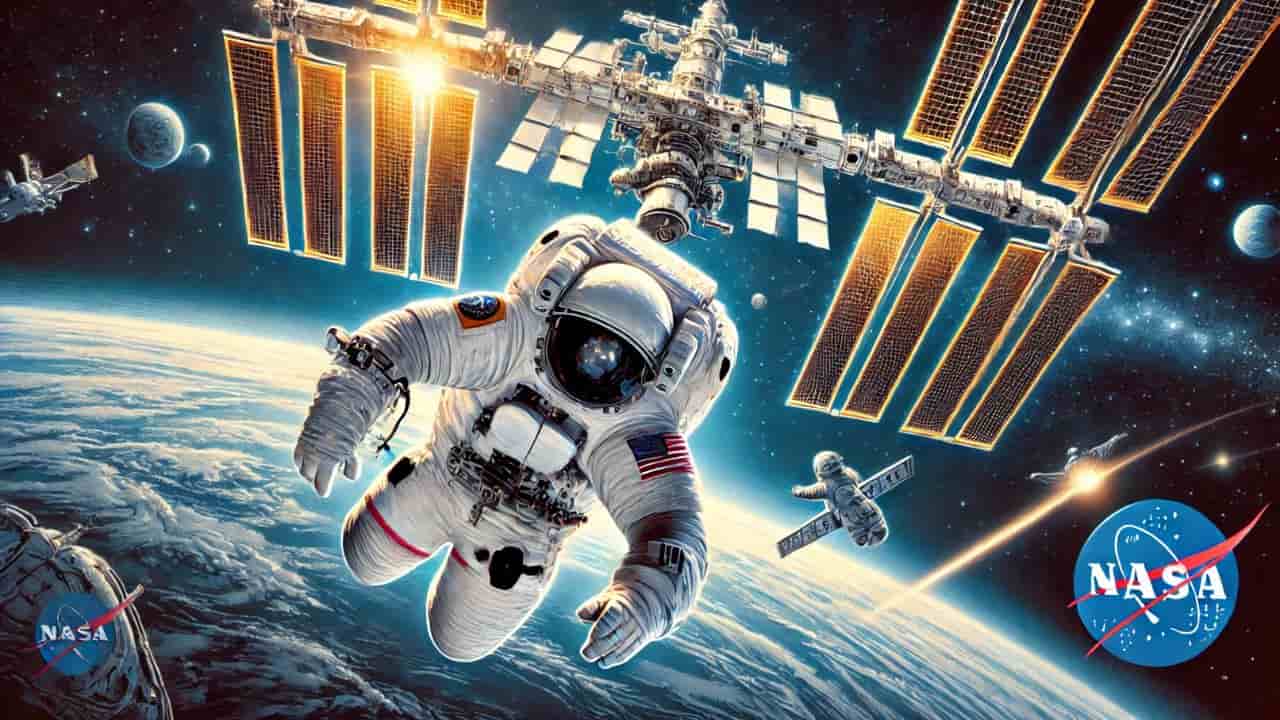NASA astronaut Don Pettit, ISS crew arrival, Roscosmos Soyuz MS-26, International Space Station Expedition 71, Expedition 72, space exploration, NASA SpaceX Crew-9, space mission 2024, scientific research in space, Don Pettit spaceflight, international cooperation in space
NASA astronaut Don Pettit, along with Roscosmos cosmonauts Alexey Ovchinin and Ivan Vagner, arrived at the ISS for a six-month mission as part of Expeditions 71/72. The crew will advance scientific research and international cooperation in space exploration.

NASA Astronaut Don Pettit and Crewmates Arrive at the International Space Station for Expedition 71/72
On Wednesday, NASA astronaut Don Pettit, alongside Roscosmos cosmonauts Alexey Ovchinin and Ivan Vagner, successfully arrived at the International Space Station (ISS) aboard the Soyuz MS-26 spacecraft. Their arrival marks the beginning of a busy 13-day handover period, during which the ISS will temporarily host 12 astronauts—an unusually high number for the orbiting laboratory. This event is significant as it signals the continuation of long-standing international cooperation in space exploration, with the crew’s mission lasting approximately six months. Pettit, Ovchinin, and Vagner will contribute to ongoing scientific research and technological advancements as part of Expeditions 71 and 72 before their return to Earth in the spring of 2025.
The Journey to the ISS
Pettit and his crewmates launched from the Baikonur Cosmodrome in Kazakhstan at 12:23 p.m. EDT (9:23 p.m. Baikonur time) aboard the Roscosmos Soyuz MS-26 spacecraft. After just two orbits of Earth, the spacecraft docked with the ISS’s Rassvet module at 3:32 p.m. EDT. This short, three-hour journey was made possible through years of advancements in spacecraft technology, allowing for quicker transit times between Earth and the ISS.
The docking process of the Soyuz MS-26 spacecraft was fully automated, reflecting the precision and sophistication of modern space technology. While the astronauts monitor the process, human intervention is rarely necessary, ensuring the safety of the crew and the station. The smooth docking was celebrated as another successful collaboration between NASA and Roscosmos, marking the start of a critical mission for both agencies.
Public Engagement and Streaming Coverage
In line with NASA’s commitment to making space exploration more accessible and engaging for the public, the agency provided live coverage of the event across multiple platforms. The hatch opening was broadcasted at 5:30 p.m. EDT through NASA’s official channels, including NASA+, the NASA app, YouTube, and the agency’s website. This event drew significant attention, as space enthusiasts worldwide tuned in to watch the arrival of Pettit, Ovchinin, and Vagner aboard the ISS.
NASA’s approach to sharing these moments with the public is part of its broader mission to inspire future generations of scientists, engineers, and astronauts. By making these significant milestones readily available online, NASA ensures that its work in space becomes a shared experience, fostering a sense of global participation in space exploration.
Aboard the ISS: Integration with Expedition 71 Crew
Upon their arrival at the ISS, Pettit, Ovchinin, and Vagner joined the current Expedition 71 crew. This team includes an accomplished group of NASA astronauts, including Tracy C. Dyson, Mike Barratt, Matthew Dominick, Jeanette Epps, Butch Wilmore, and Suni Williams, as well as Roscosmos cosmonauts Nikolai Chub, Alexander Grebenkin, and Oleg Kononenko. For the next 13 days, the station will host 12 crew members in total, a rare occurrence that underscores the importance of this handover period.
Expedition 71 has already been deeply involved in a range of scientific experiments, many of which explore the effects of long-duration spaceflight on the human body, as well as advanced technologies that could benefit future missions to the Moon, Mars, and beyond. The arrival of Pettit, Ovchinin, and Vagner adds even more scientific expertise to this dynamic crew, ensuring that the ISS remains a hub for groundbreaking research.
This handover period will culminate in the departure of three astronauts—Tracy C. Dyson, Nikolai Chub, and Oleg Kononenko—on September 23, 2024. Dyson has spent six months aboard the ISS as part of Expedition 71, while Chub and Kononenko are concluding a year-long stay in space, showcasing the endurance required for such extended missions.
Scientific Contributions and Research Goals
Pettit, Ovchinin, and Vagner’s mission aboard the ISS will focus heavily on advancing scientific knowledge in a variety of fields. Their six-month stay as members of Expeditions 71 and 72 will involve conducting experiments in areas such as biology, physics, materials science, and technology development. Many of these experiments are designed to address challenges related to long-term space exploration, including the effects of microgravity on human health, the development of new materials that can withstand the harsh conditions of space, and the testing of life support systems that will be crucial for future missions to Mars.
Pettit, a veteran astronaut with extensive experience in conducting scientific experiments in space, is particularly well-suited to this mission. Known for his creativity and problem-solving skills, Pettit previously made headlines for inventing a zero-gravity coffee cup during one of his earlier missions. His inventive mindset and scientific expertise make him a valuable asset to the research initiatives aboard the ISS.
Ovchinin and Vagner, both experienced cosmonauts, bring their own unique skill sets to the mission. Ovchinin, like Pettit, is on his fourth spaceflight and has previously served aboard the ISS. His familiarity with the station’s systems and operations will be critical as the crew works to maintain and upgrade the ISS over the next six months. Vagner, on his second spaceflight, has a background in spacecraft systems engineering, making him instrumental in ensuring the station’s continued functionality.
Upcoming Crew Arrivals and Future Expeditions
One of the key milestones during Expedition 72 will be the arrival of two additional crews. NASA’s SpaceX Crew-9 is scheduled to launch in September 2024, followed by Crew-10 in February 2025. These crews will bring new supplies, experiments, and equipment to the station, further bolstering the research efforts aboard the ISS. Each crew rotation represents an opportunity to build on the scientific discoveries of previous expeditions while introducing new technologies and ideas.
The presence of these additional crews will ensure the continued operation of the ISS as a world-class research facility. While Pettit, Ovchinin, and Vagner’s mission will conclude in the spring of 2025, the station itself will remain a focal point for international cooperation and scientific innovation.
Don Pettit: A Veteran of Space Exploration
Don Pettit’s journey to the ISS marks his fourth spaceflight, making him one of NASA’s most experienced astronauts. His career in space exploration spans over two decades, beginning with his first mission aboard the space shuttle Endeavour in 2002. Pettit is well-known for his ingenuity, having conducted a wide range of scientific experiments during his previous missions. His ability to find creative solutions to complex problems has earned him a reputation as a highly resourceful astronaut.
Pettit’s contributions to space exploration extend beyond his time in space. He has been a strong advocate for STEM education, frequently engaging with students and the public to inspire interest in science, technology, engineering, and mathematics. His passion for discovery, combined with his extensive experience, makes him a key figure in NASA’s efforts to push the boundaries of what is possible in space exploration.
The Importance of International Cooperation
The arrival of the Soyuz MS-26 spacecraft at the ISS is a reminder of the critical role that international cooperation plays in space exploration. NASA and Roscosmos have a long history of collaboration, dating back to the early days of space travel. The ISS itself is the product of a partnership between five space agencies: NASA, Roscosmos, the European Space Agency (ESA), the Japan Aerospace Exploration Agency (JAXA), and the Canadian Space Agency (CSA).
This international collaboration has enabled missions that would have been impossible for any single nation to achieve on its own. By sharing resources, expertise, and technology, these agencies have created a platform for scientific research that benefits all of humanity. The ISS is not just a space station; it is a symbol of what can be achieved when nations work together toward a common goal.
The Future of Space Exploration
As Pettit, Ovchinin, and Vagner embark on their six-month mission aboard the ISS, they are contributing to humanity’s broader efforts to explore the cosmos. The research conducted aboard the ISS has far-reaching implications for future space missions, including NASA’s Artemis program, which aims to return humans to the Moon and eventually send astronauts to Mars.
The ISS serves as a testbed for the technologies and systems that will be required for these future missions. From life support systems to radiation shielding, the knowledge gained from the ISS will be critical for ensuring the safety and success of long-duration spaceflights. Pettit and his crewmates are playing a key role in this effort, helping to pave the way for the next generation of space explorers.
Conclusion
The arrival of NASA astronaut Don Pettit, along with Roscosmos cosmonauts Alexey Ovchinin and Ivan Vagner, at the International Space Station marks the beginning of another exciting chapter in the history of space exploration. Their mission, which will span six months, is not only a continuation of the scientific research conducted aboard the ISS but also a testament to the power of international collaboration. As they work alongside their fellow crew members, they will contribute to humanity’s understanding of life in space and help pave the way for future missions to the Moon, Mars, and beyond.
Read More
- Kamala Harris and Willie Brown Resurfaced Clip Raises Questions About Their Relationship and Political Ascent
- Kathy Bates Announces Retirement After ‘Matlock’ Reboot: ‘It’s Exhausting
- NASAs Europa Clipper Mission Exploring Jupiters Moon Europa for Signs of Life
- Angel Reeses Season Ending Injury Reflection and Resilience in Her Rookie WNBA Campaign
